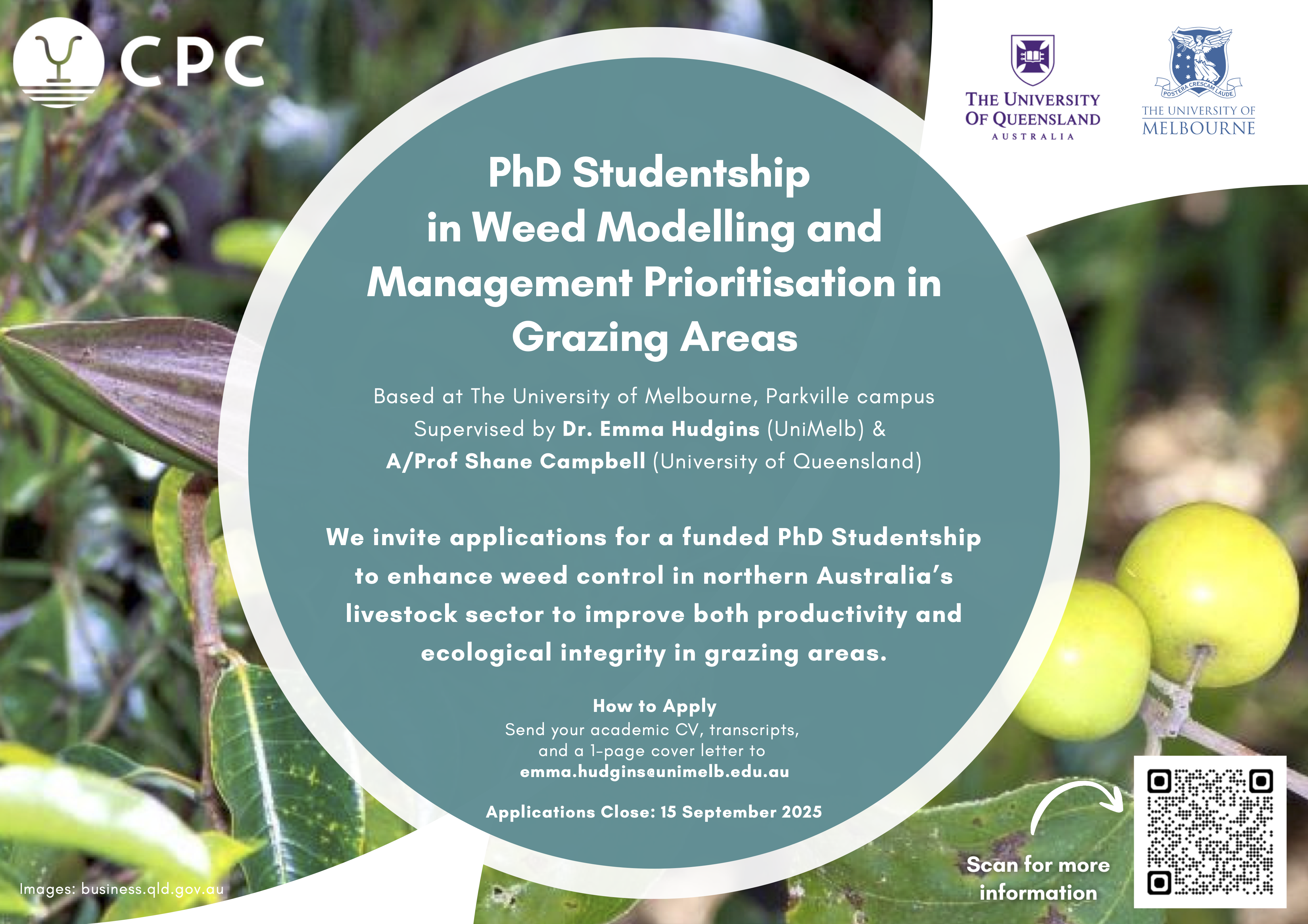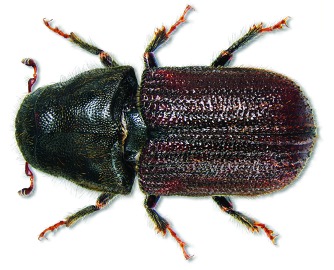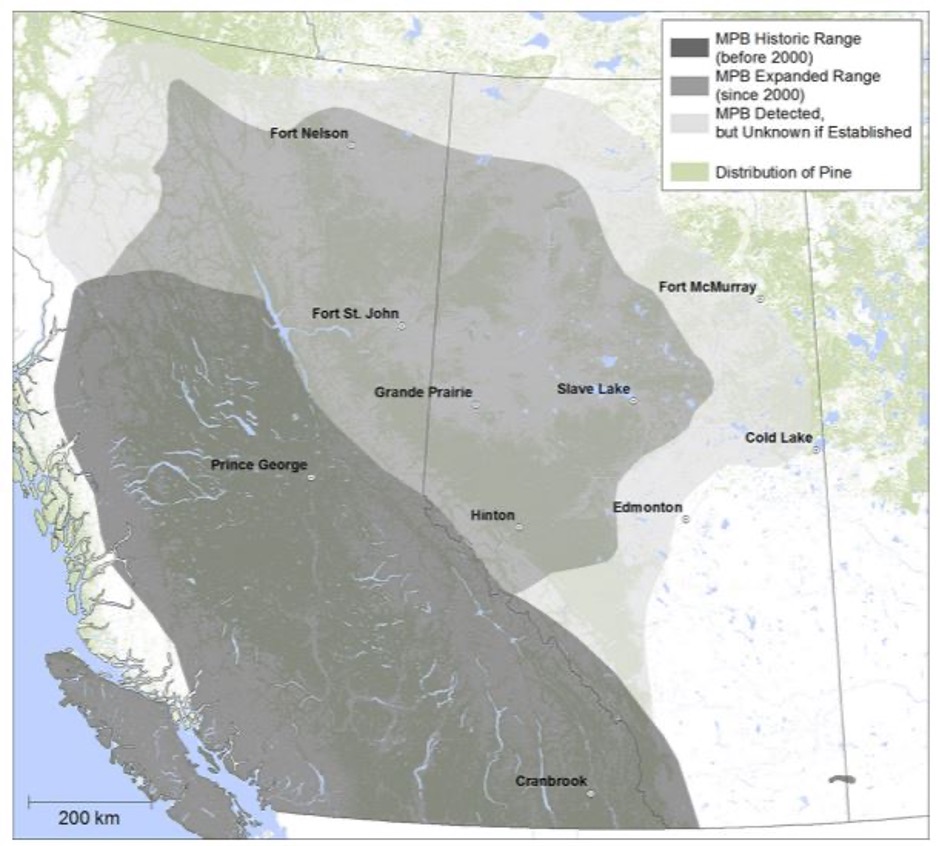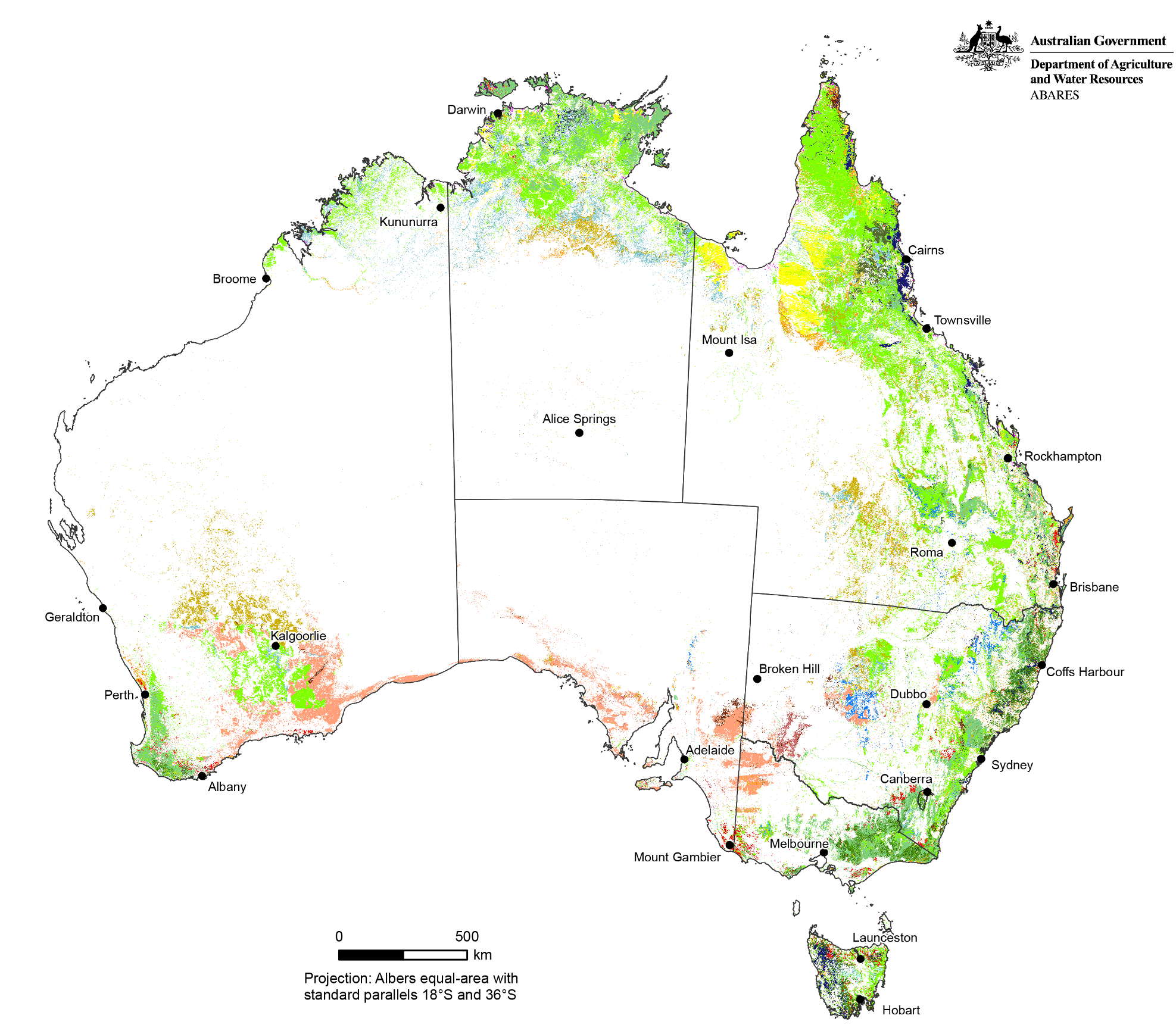Opportunities
Open calls for students

Possible project ideas
Note: this is only a small list of ideas for projects. If you’d like to propose your own, please get in touch. Importantly, I value excitement and curiosity over any pre-existing quantitative skills you may have, so don’t shy away from getting in touch if you don’t have a modelling or coding background.
Cooperative management of invasive species spread (Masters or Honours project)


In Canada, an insect called the Mountain Pine Beetle is moving Eastward under climate change. This native species has started to behave more like an invader thanks to warming temperatures and is threatening a much larger swath of forest than it ever did before. In response to this threat, two Canadian Provinces have decided to work together to control its spread. Currently, the Province of Sakatchewan pays its neighbour, the province of Alberta, part of their tree surveillance and removal budget, in order to avoid the beetle spreading into their province. Alongside Drs. Denys Yemshanov, Devin Goodsman and Chris MacQuarrie at the Natural Resources Canada - Canadian Forest Service and Dr. Bob Haight at the USDA Forest Service, we are building optimisation models that borrow from Game Theory to determine the optimal arrangement of tree removal effort and the optimal transfer of funds from one province to another that lead to a win-win for both provinces.
With the Center for Excellence in Biosecurity Risk Analysis at the University of Melbourne, there is the potential to expand this framework to examine insurance payments undertaken by companies that move potentially infested items within Australia to allow win-wins for business and native biodiversity.
Optimal spread control of Australian forest pests (MSc or PhD projects)


I’ve worked on several large-scale models of invasive species spread, but have only worked on species specific management optimisations. Since I have an interest in uncovering generalities in invasions at large scales, I’m interested in seeing whether there could be general spatial patterns in optimal management across species that can be used in situations with poor data or novel invaders. Are the same types of management actions always selected with the same spatial arrangement? Are there rough pest population densities at which the best management action changes? Do pest species traits predict the style of management that is chosen?
I’m interested in extending my previous invasive species spread, impact, and management optimisations to Australian pest species such as Myrtle Rust and Phythophthora Dieback to understand how a suite of spatial management actions may be optimized to slow their spread. This expansion will require an understanding of Australian transport networks, major vectors of Australian pest and pathogen spread, and host distributional data sources. It will also require partners with practical knowledge of jurisdictional considerations for the different types of pest management options in Australia.